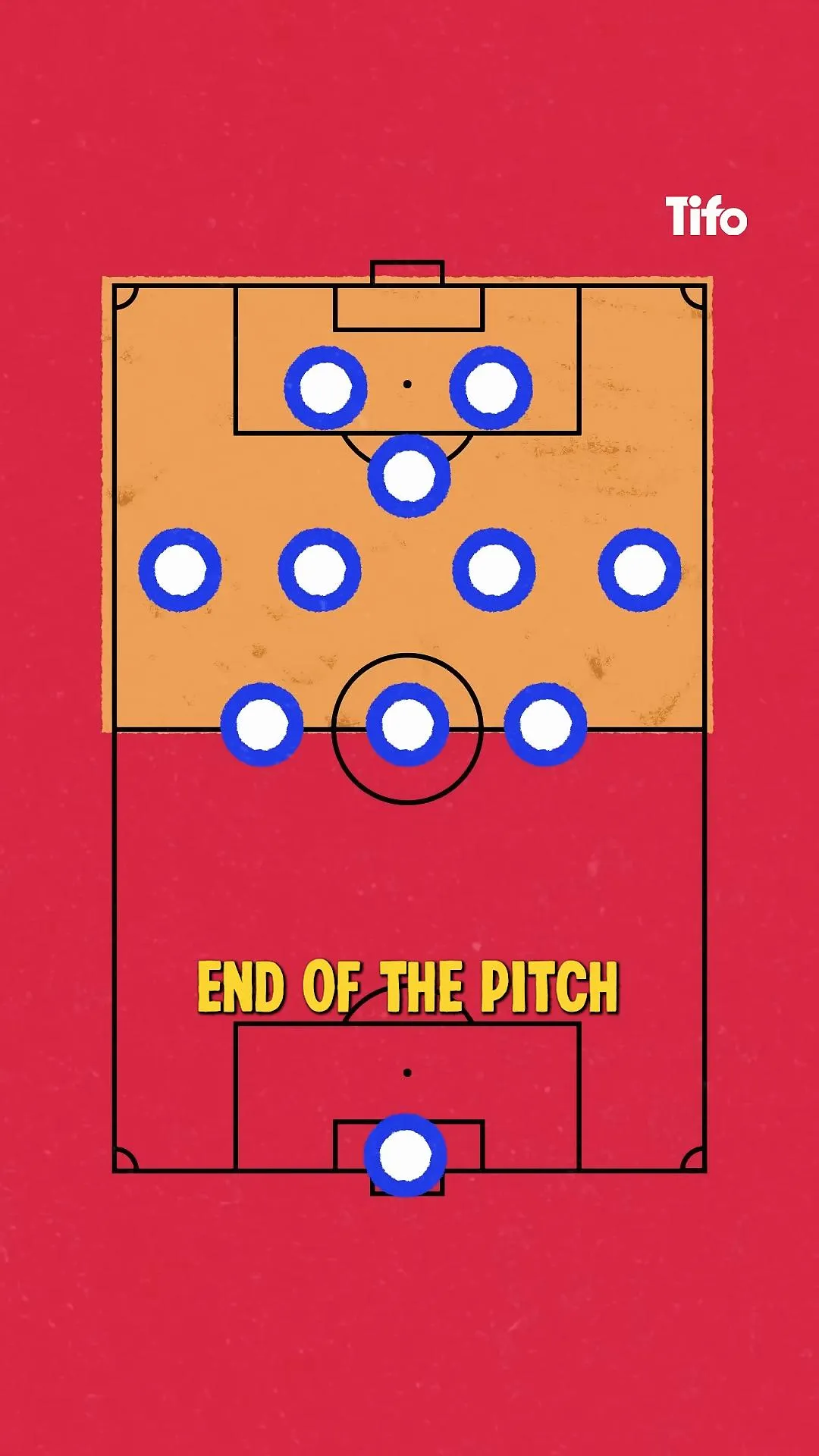The term mid-block definition refers to a specific tactical approach in football that is gaining significant traction among modern teams. What does it mean for a team to adopt a mid-block strategy? Essentially, it signifies a balance between aggressive pressing and a more conservative defensive posture. But how does this strategy actually work in a match? By occupying the central areas of the pitch and minimizing space, teams can effectively disrupt their opponents’ flow and create opportunities for counter-attacks. So, what are the advantages of implementing a mid-block, and how can teams utilize it effectively? Let’s explore these questions in detail.
Mid-Block Definition: Understanding the Tactical Approach
The mid-block definition can be understood as a tactical formation used by teams to defend effectively while simultaneously looking for opportunities to regain possession. Unlike a low block, which focuses on deep defense, or a high press that aims to win the ball back aggressively, the mid-block strategy finds a sweet spot in the middle ground. This approach allows teams to stay compact and organized without completely sacrificing their offensive potential.
How Does the Mid-Block Work?
The mid-block operates by maintaining a structured formation that limits the opponent’s ability to pass through the central areas of the pitch effectively. When a team employs a mid-block, they do not press too aggressively, allowing their opponents to have some possession. However, this is a deliberate tactic to draw the attacking team into a false sense of security, enticing them to play long balls or operate in zones where they can be easily intercepted.
Key Characteristics of Mid-Block Play
- Compactness: Teams maintain close distances between players to reduce passing lanes.
- Pressure Zones: Players are positioned to react immediately once the ball enters crucial areas.
- Counter-Attacking Potential: The structure allows for quick transitions when regaining possession.
- Minimized Space: By closing down spaces, the opposition’s playmakers are neutralized.
Advantages of the Mid-Block Definition in Football
Implementing a mid-block strategy offers numerous advantages that can significantly help a team during a match. Here are the primary benefits:
1. Limiting Opposition Creativity
One of the most significant advantages of a mid-block is its ability to marginalize key players who thrive in central areas. By reducing space and time on the ball, midfielders and forwards are often forced to play wide, which can disrupt their usual rhythm and effectiveness.
2. Encouraging Long Passes
By not pressing high up the pitch, the defending team can invite their opponents to play long balls. This tactic often leads to turnovers, as players who are not accustomed to playing aerial passes may struggle to maintain possession.
3. Defensive Stability
The mid-block provides a solid defensive structure that helps players maintain their shape. This stability is crucial in ensuring that the team does not become overly stretched, which can happen with a high pressing game.
4. Flexibility in Transition
When the ball is regained, teams can quickly transition into counter-attacks, utilizing the space left by opponents who have pushed forward. This flexibility often catches teams off guard, leading to scoring opportunities.

Implementing Mid-Block Tactics in Matches
For teams looking to implement the mid-block, understanding specific tactical nuances is crucial. Here are some key strategies:
1. Player Positioning
Coaches must ensure that players are well-positioned to respond to the movements of the ball. This often means having a fluid formation that allows players to shift and cover for one another effectively.
2. Communication
On-field communication is essential for a successful mid-block. Players need to be continually aware of their surroundings and ready to adjust their positioning based on the opponent’s movements.
3. Training Drills
Incorporating specific drills that emphasize compactness and pressing triggers can help teams become more adept at executing a mid-block. These drills should focus on both defensive organization and quick transition play.
4. Monitoring Opposition Strengths
Coaches should analyze the strengths and weaknesses of their opponents to understand how to best implement a mid-block. For example, if an opposing team relies heavily on their wingers, the mid-block can be adjusted to account for that by closing down wide areas quickly.

Comparing Mid-Block with Other Defensive Strategies
To appreciate the mid-block definition fully, it’s essential to compare it with other defensive strategies, such as the low block and the high press:
Mid-Block vs. Low Block
While a low block emphasizes deep defensive positioning, the mid-block allows for a more proactive approach. Teams using a low block often invite pressure, while those employing a mid-block actively seek to disrupt passing lanes.
Mid-Block vs. High Press
High pressing teams aim to win the ball back immediately in advanced areas, which can leave them vulnerable to counter-attacks. In contrast, the mid-block allows teams to maintain a balance between defense and attack, minimizing risk while still being opportunistic.
Choosing the Right Strategy
Ultimately, the choice between these strategies depends on various factors, including the team’s strengths, the opponent’s style of play, and the game’s context. For a deeper dive into these tactics, you can explore resources like The Coaches’ Voice and FIFA Training Centre.
Key Takeaways about Mid-Block Definition
- The mid-block is a tactical approach that balances defensive solidity with offensive opportunism.
- It effectively limits opponents’ creativity by reducing space and time on the ball in central areas.
- Teams employing a mid-block can transition quickly to counter-attack when possession is regained.
- Understanding player positioning and communication is crucial for effective mid-block implementation.
In summary, the mid-block definition is a vital concept in modern football that helps teams defend while maintaining the potential for quick counter-attacks. This strategic approach allows for flexibility and adaptability in various match situations, making it an essential tactic for coaches and players alike. By mastering the mid-block, teams can enhance their defensive organization and create more scoring opportunities, leading to overall improved performance on the pitch.
